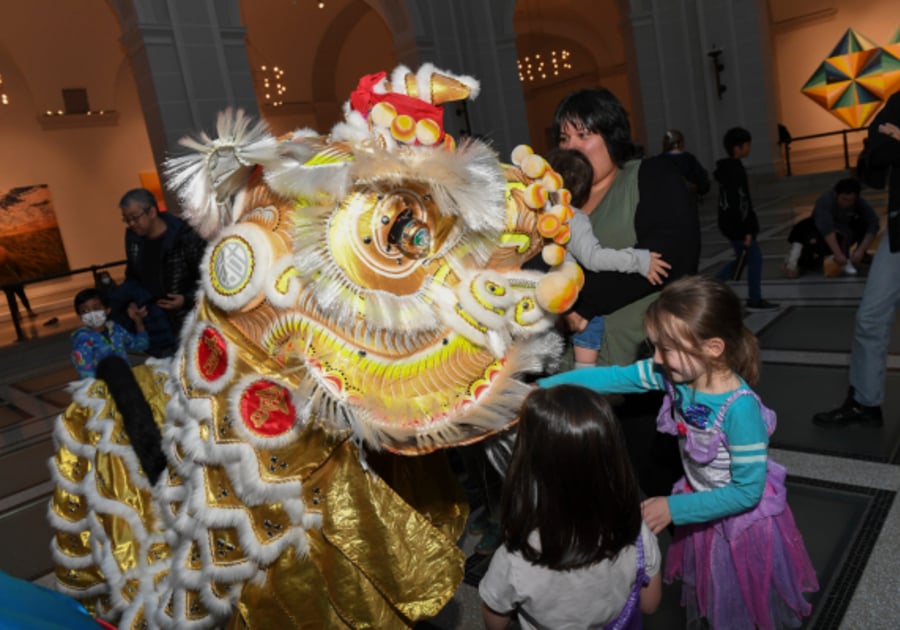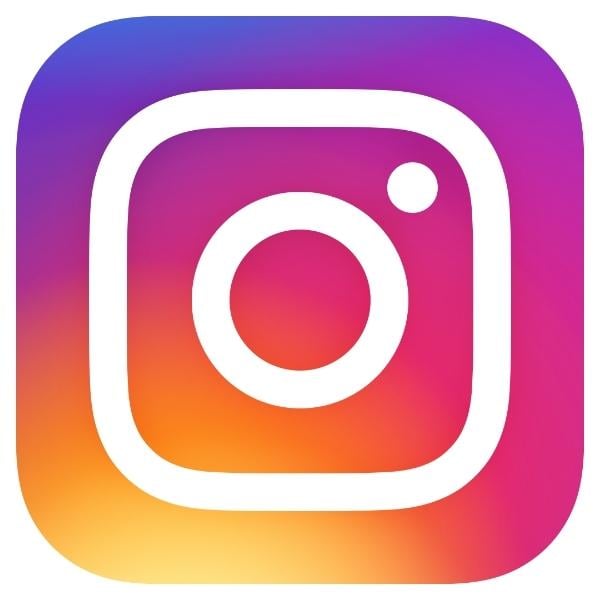It's time to say goodbye to the Year of the Dragon and usher in the Year of the Snake! Lunar New Year arrives January 29th and the holiday traditionally lasts 15 days.
Each year of the lunar calendar is based on one of 12 animals: rat, ox, tiger, rabbit, dragon, snake, horse, sheep, monkey, rooster, dog, and pig. Each of the represented animals comes with unique traits that are indicative of what’s to come in the new year. It's also believed to represent personality traits in people born this year.
So what can you expect in the year of the snake? The Snake is the sixth animal in the zodiac, characterized as alert, calm, and smart and has a complex, and mysterious nature.
Celebrate Lunar New Year around NYC
Friday, February 7:
Saturday, February 8:
- 11am-7pm: Lunar New Year Fair at Gotham Park in Lower Manhattan
- 12-4pm: Lunar New Year Celebration at Queens Botanical Garden in Flushing
- 12-6:30pm: Lunar New Year Celebration at Gone to the Dogs in Park Slope
- 12:30-1:30pm: Chinese Paper Cutting Art Workshop at Brooklyn Heights Library
- 1-2pm: Family Lunar New Year Celebration at Central Library in Prospect Heights
- 1-2pm: Chinese Shadow Theater Performance at Sunset Park Library
- 2-4:30pm: Super Saturday Lantern Celebration at Think!Chinatown
- 2:30-4pm: Lunar New Year Fair at Sunset Park Library
- 3pm: NY Chinese Cultural Center Lunar New Year Show at MoCA in Chinatown
Sunday, February 9:
- 11am-5pm: Lunar New Year Fair at Gotham Park in Lower Manhattan
- 11:30am-2:30pm: Lunar New Year Parade in Sunset Park
- 11:30-5pm Lunar New Year Extravaganza at Chelsea Market
- 1-4pm: Community Lunar New Year Celebration at PS105 in Borough Park
Saturday, February 15:
- 2-4pm: Light, Bright Lanterns at MOCA in Lower Manhattan
- 3-9pm: Culture Lab LIC's Lantern Festival in Long Island City
Sunday, February 16:
- 11:30am-3:30pm: 27th Chinatown Lunar New Year Parade & Festival in Chinatown
- 2-5pm: Mahjong Party at Think!Chinatown
- 3pm: Nai-Ni Chen Dance Co Lunar New Year Celebration at Hostos in the Bronx
Missing a Lunar New Year event? Submit it to our event calendar here.
Want to know more about the different Lunar New Year traditions around the world? Here are some of the ways China, Korea, Vietnam, Tibet, and Mongolia celebrate:
China
Dragon dances, mooncakes, parades, fireworks, red envelopes... most of us are familiar with many of the traditions associated with Chinese New Year celebrations. Lunar New Year is a very big deal in China. Schools and businesses are closed for a whole week and millions of people travel to their hometowns to spend the holiday with family in what is often referred to as "the world's largest human migration." Red is considered a lucky color in Chinese culture, so you will see it in abundance during Lunar New Year festivities.
Speaking of red, those red envelopes, known as hong bao, contain money that is given by elders to children. While the traditional foods prepared and eaten during Lunar New Year vary somewhat by region, jiaozi (dumplings), nian goa (rice cakes), and mandarin oranges are considered lucky foods.
How to celebrate Chinese New Year at home:
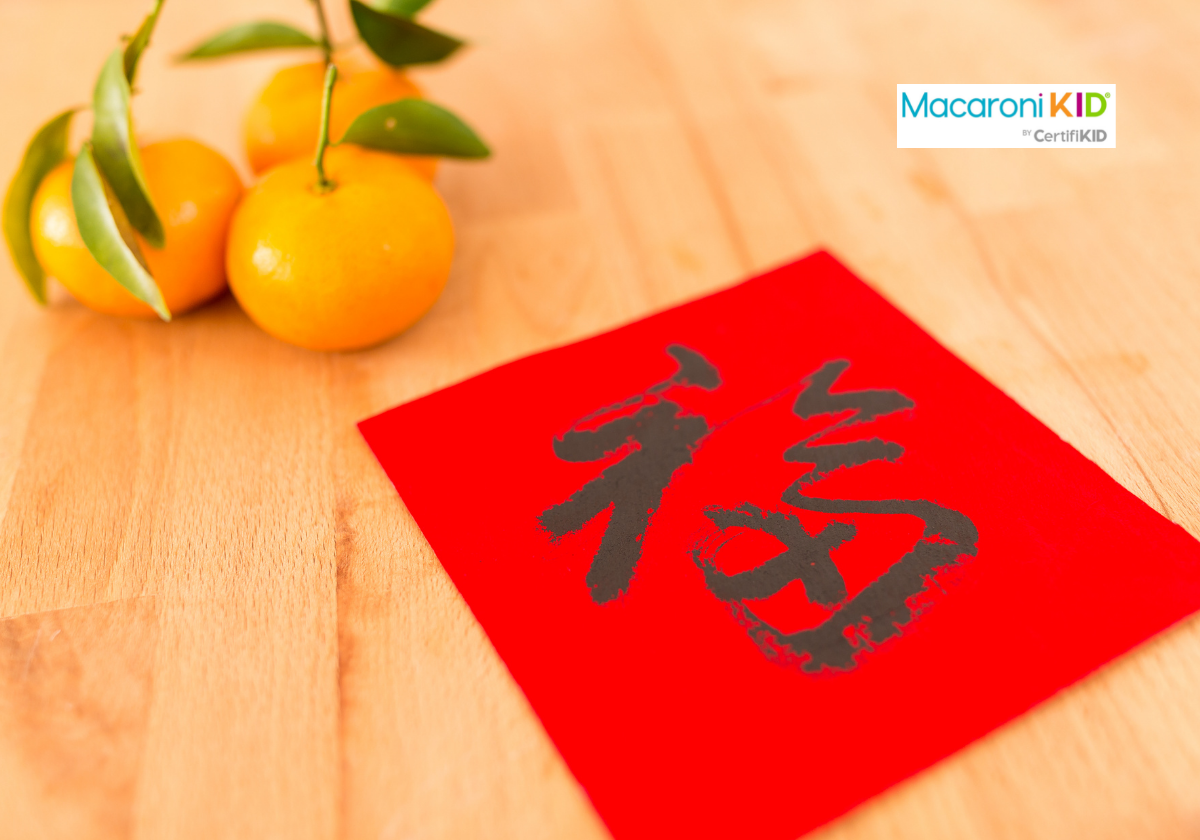 Leung Cho Pan via Canva Leung Cho Pan via Canva |
- Learn to say "Happy New Year" in Mandarin
- Try these kid-favorite recipes for jiaozi (dumplings), lo mein or spring rolls
- Make this adorable Chinese Dragon Puppet craft
- Watch a Chinese Dragon Dance performance and learn about its meaning
- Watch this kid-friendly video explaining the origins of Lunar New Year in China
Korea
Korean Lunar New Year, called Seollal, is one of the most important national holidays in Korea, where families gather over three days — spanning from the day before Seollal to the day after — to pay respect to their ancestors, prepare and eat traditional foods, play folk games, and exchange gifts.
Eating rice cake soup (tteokguk) is an important part of the tradition, as Koreans believe everyone gets a year older on Seollal — but only if they eat their tteokguk! Kids look forward to performing a deep traditional bow (sebae) for their elder family members in exchange for blessings — and New Year's money!
How to celebrate Seollal at home:
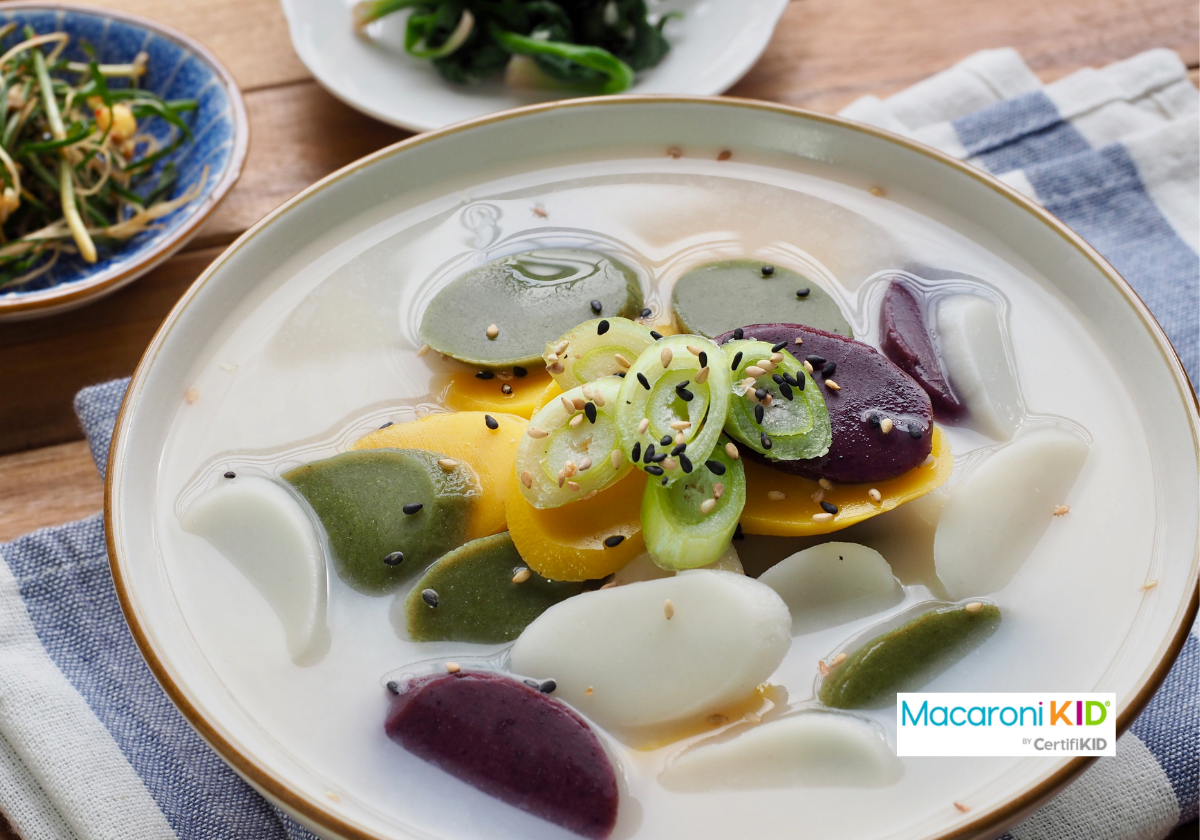 Getty Images via Canva Getty Images via Canva
|
- Learn how to say "Happy New Year" in Korean
- Learn the proper way to bow on Seollal (sebae)
- Craft these fun Korean fans and drums and this origami Hanbok (traditional Korean dress)
- Learn how to make your own Yut Nori game, a traditional board game Koreans often play on Seollal
Vietnam
Vietnamese New Year ("Tết") is the most important national holiday in Vietnam. Similar to Korean Seollal, Vietnamese people celebrate by returning to their home villages for big family reunions involving special holiday foods, decorations, games, ancestral worship, exchanging traditional New Year's greetings, bestowing lucky money on kids and elders, and purification rituals aimed at washing away the bad luck of the old year and welcoming the new year afresh.
Lunar New Year's Eve kicks off the celebrations with fireworks, dragon dances, and boisterous parades filled with rattles, gongs, drums, and bells meant to scare off evil spirits. The first day of Tết is the most sacred, celebrated with just close family. Family members dress up in new clothes, symbolizing a fresh start to the new year, and children receive a red envelope containing money from their elders. The following days are filled with visits with friends and extended family.
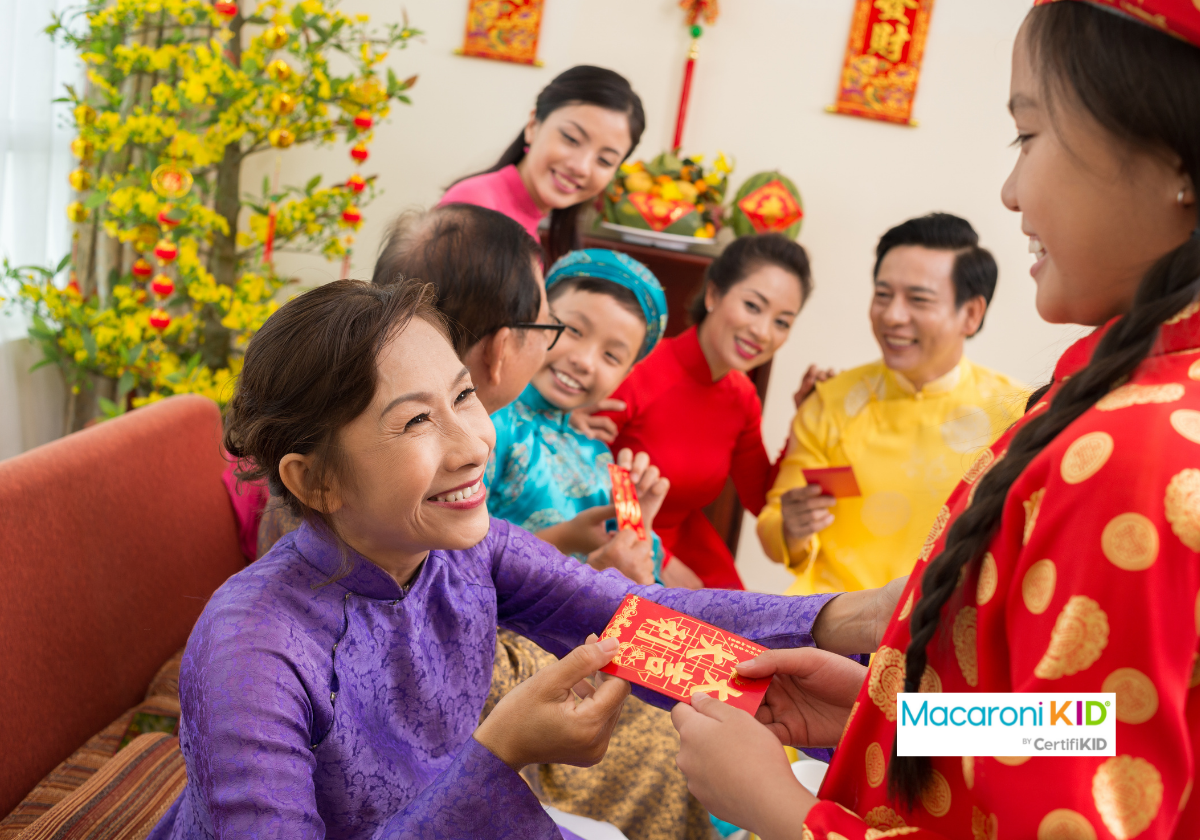 DragonImages via Canva DragonImages via Canva |
How to celebrate Tết at home:
- Learn how to wish someone a "Happy New Year" in Vietnamese
- Try this Mứt hoa quả (candied fruit) recipe, a favorite of Vietnamese children during Tết
- DIY your own Vietnamese nón lá ("leaf hat")
Tibet
Tibet's Losar festival is steeped in their common Buddhist faith with an emphasis on continuous chanting of scripture to expel the evil demons that the Tibetan people believe exist everywhere, and praying for good luck and blessing for the coming year.
Families prepare for Losar by buying new clothes, thoroughly cleaning their homes to clear away the bad luck of the old year, and decorating with fragrant flowers and auspicious signs. The centerpiece of the home is the Losar altar, which is a basic Tibetan Buddhist shrine, but with additional items meant to invoke blessings and abundance for the New Year.
Fun fact: Because the Tibetan words for "sheep's head" and "beginning of the year" are similar, it is customary for families to make a sheep's head out of colored butter as a decoration! Losar festivities last several days and include gathering with family and friends, prayer ceremonies, exchanging gifts, eating traditional foods, and visiting local monasteries.
How to celebrate Losar at home:
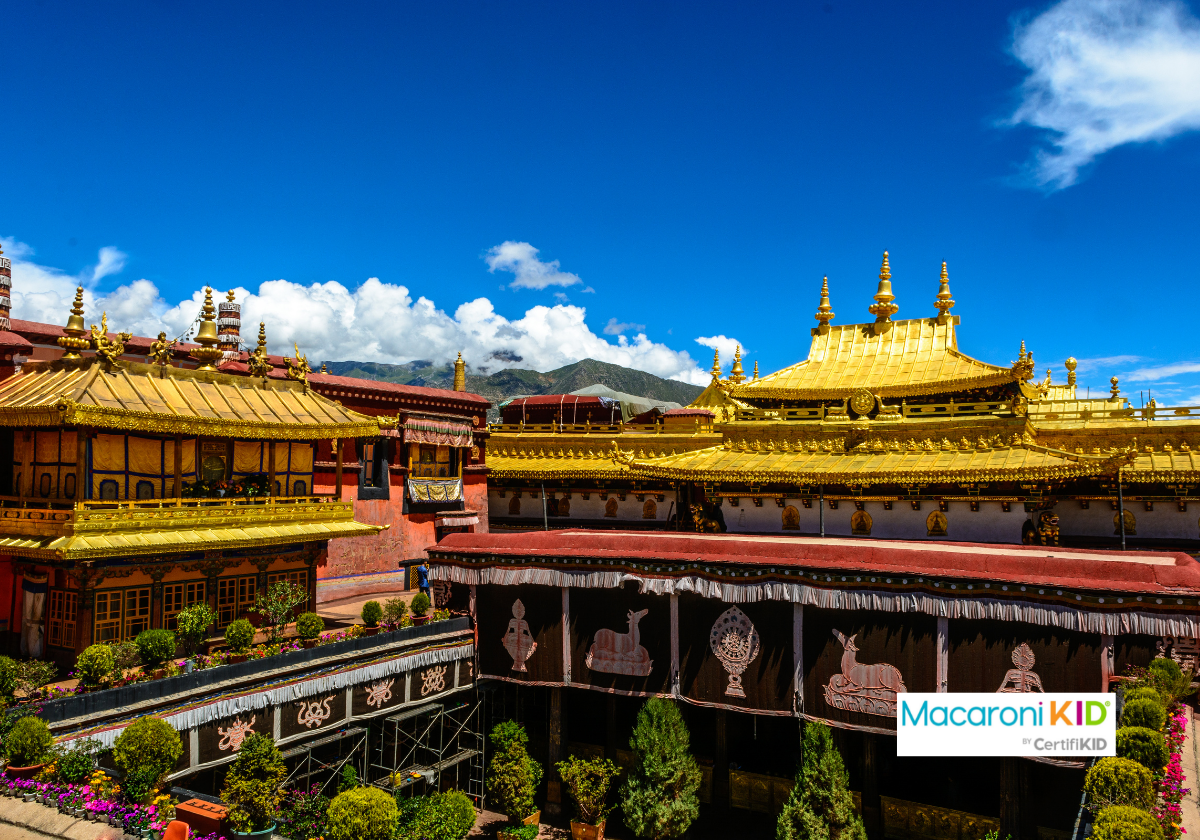 Getty Images via Canva Getty Images via Canva
|
- Learn traditional Tibetan New Year's greetings
- Make khapse (deep fried pastries most often eaten during Losar) and momos (Tibetan dumplings)
- DIY your own Tibetan prayer flags
Mongolia
Tsagaan Sar literally translates to "White Moon," and is Mongolia's most important national holiday. While Tsagaan Sar celebrations and customs have changed several times since the holiday was first established in the 12th century, modern festivities focus on family togetherness and unity, paying respect to elders, passing on Mongolian culture and traditions to the younger generation, and welcoming spring with an optimistic spirit and kind heart.
Similar to other cultures, Mongol New Year's preparations focus on cleaning their homes and bodies, with the belief that cleanliness ushers in good luck, and preparing traditional foods. Tsagaan Sar festivities officially last three days and involve visiting with family, friends, and neighbors; many special rituals; and lots of eating with an emphasis on white food, which symbolizes purification.
How to celebrate Tsagaan Sar at home:
- Learn Zolgokh, the traditional Mongolian greeting performed during Tsagaan Sar and seen in the video above.
- More than half of Mongols live in gers (yurts); watch this video to see how a ger is built
- Make a Mongolian girl's headdress craft
- Make Mongolian buuz (steamed dumplings) and suutei sai (milk tea)
Happy New Year! We hope you enjoyed this tour of Lunar New Year traditions and have fun incorporating some into your own celebrations this year.
Past 2025 Lunar New Year events in NYC:
Saturday, January 18:
- 1pm, 3pm, 5pm: Lion Dances at at Hudson Yards in Midtown
Sunday, January 19:
Tuesday, January 21:
Wednesday, January 22:
Friday, January 24:
- 3-4:30pm: Chinese New Year Carnival in Lower Manhattan
- 6-8pm: Lunar New Year Night Market at PS11 in Clinton Hill
Saturday, January 25:
- 10:30am Lunar New Year Celebration! East Asian Architecture at The Skyscraper Museum in Battery Park
- 12-5pm: Lunar New Year Festival: The Year of the Snake at The Met in UES
- 1pm, 3pm, 5pm: Lion Dances at at Hudson Yards in Midtown
- 1-4pm: Moon Over Manhattan: Lunar New Year Family Day at Asia Society in UES
- 2-5pm: MOCACREATE: Lunar New Year Museum Makeover at MOCA in Lower Manhattan
- 3pm: Lunar New Year: Celebrating the Year of the Snake in Flushing
Sunday, January 26:
- 10am-1pm: Lunar New Year Celebration at IKEA Brooklyn in Red Hook
- 12:45-4pm: Lunar New Year Family Festival at Brooklyn Museum in Prospect Heights (ages 4+)
- 2-4pm: Weekend Art: Sunday Art Hang at Brooklyn Museum in Prospect Heights (ages 4+)
- 2-5:15pm: Lunar New Year Papercutting Workshops in Chinatown
- 2pm & 7pm: Lion's Dances at Dekalb Market Hall in Downtown Brooklyn
- 3pm: Lunar New Year: Celebrating the Year of the Snake in Flushing
Monday, January 27:
Tuesday, January 28:
- 10am-5pm: Lunar New Year Programs at Children's Museum of Manhattan
- 11am-3:45pm: Grab & Go Craft: The Year of the Snake at Talea in Williamsburg
Wednesday, January 29:
- 10am-5pm: Lunar New Year Programs at Children's Museum of Manhattan
- 10:30am Chinese New Year Day Lion Dance Parade in Chinatown
- 11am-3:30pm 27th Lunar New Year Firecracker Ceremony & Cultural Festival in Chinatown
- 12-4pm: Lunar New Year School Holiday in Prospect Park
- 2-3pm: Book Launch w/ Author Michele Wong McSween at MOCA in Lower Manhattan (ages 3-8)
- 4:30-6pm Lunar New Year Day Lion Dancing at Pearl River Mart in SoHo
Thursday, January 30:
- 10am-5pm: Lunar New Year Programs at Children's Museum of Manhattan
- 3-3:45pm: Lunar New Year Storytime at Brooklyn Children's Museum
- 3:30-4:15pm: Kids Create: Twisted Paper Snake at Dekalb Library in Bushwick
Friday, January 31:
- 12-1pm: Lunar New Year Lion Dance at Industry City in Sunset Park
- 3-5pm: Lunar New Year Celebration at Atlantic Terminal in Downtown Brooklyn
Saturday, February 1:
- 10am-1pm: Morning Session: Lunar New Year Family Festival at MOCA in Lower Manhattan
- 10am-3pm: Lunar New Year Celebration at Lincoln Center in UWS
- 10am-5pm: Celebrate Lunar New Year at Brooklyn Children's Museum in Crown Heights
- 10am-5pm: Lunar New Year Programs at Children's Museum of Manhattan
- 11am-5pm: Lunar New Year Family Festival at The Seaport
- 12-4:10pm: Lunar New Year Celebration at Citypoint + Albee Square in Downtown BK
- 12-6pm: Hana House Lunar New Year Market in Downtown Brooklyn
- 12:30-2pm: Dodge YMCA Lunar New Year Celebration in Brooklyn Heights
- 12:30-2:30pm Chinese Paper Cutting Art Workshop at Brooklyn Heights Library
- 1-1:30pm: Lunar New Year Storytime for kids at Book Culture LIC
- 1pm, 3pm, 5pm: Lion Dances at at Hudson Yards in Midtown
- 1-3pm Lunar New Year Celebration at Queens Center in Elmhurst
- 2-4pm: Lunar New Year Celebration at BKCM in Park Slope
- 2-5pm: Afternoon Session: Lunar New Year Family Festival at MOCA in Lower Manhattan
- 3:40pm & 4:10pm: Lion's Dances at Dekalb Market Hall in Downtown Brooklyn
Sunday, February 2:
- 10am-12:20pm: Lunar New Year Celebration at Bryant Park
- 10am-5pm: Lunar New Year Programs at Children's Museum of Manhattan
- 11am-12pm: Lunar New Year Celebration and Parade in Flushing
- 12-4pm: Glow Snake Lunar New Year Celebration & Cultural Fair at Flushing Town Hall
- 1-1:30pm: Lunar New Year Storytime for kids at Book Culture LIC
- 1-4pm: Lunar New Year Celebration at Queens Museum in Flushing Meadows Corona Park
- 2-5pm: Celebrate the 2025 Lunar New Year at China Institute in Lower Manhattan
- 2:30-5pm: LNY Teahouse: Bai Nian at T!C’s Studio in Chinatown
 | 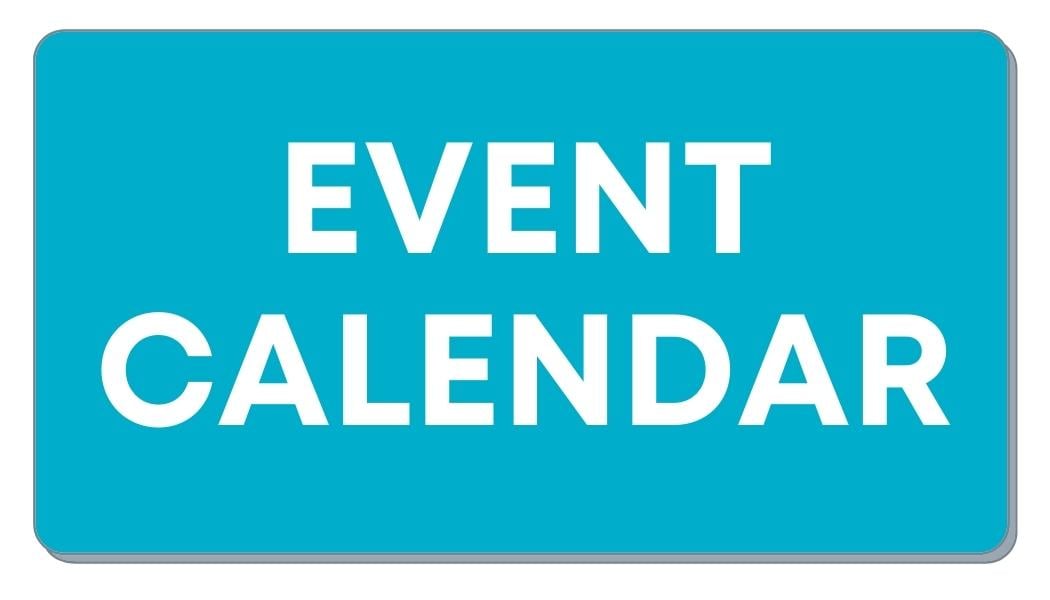 |  |  |
GIVE US A FOLLOW |
Want to advertise your locally-owned business? Email us at MacKidBrooklynNW@macaronikid.com

